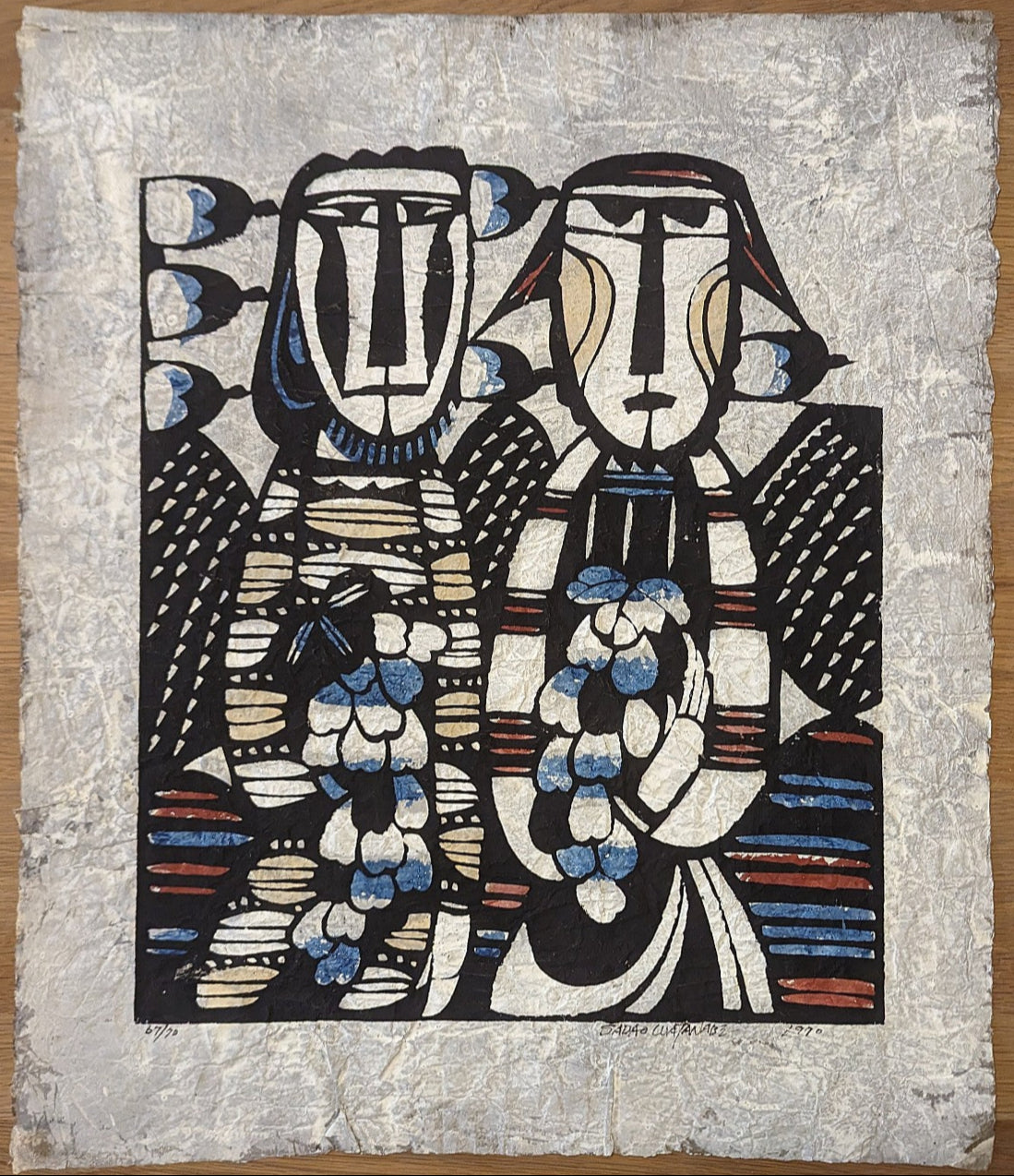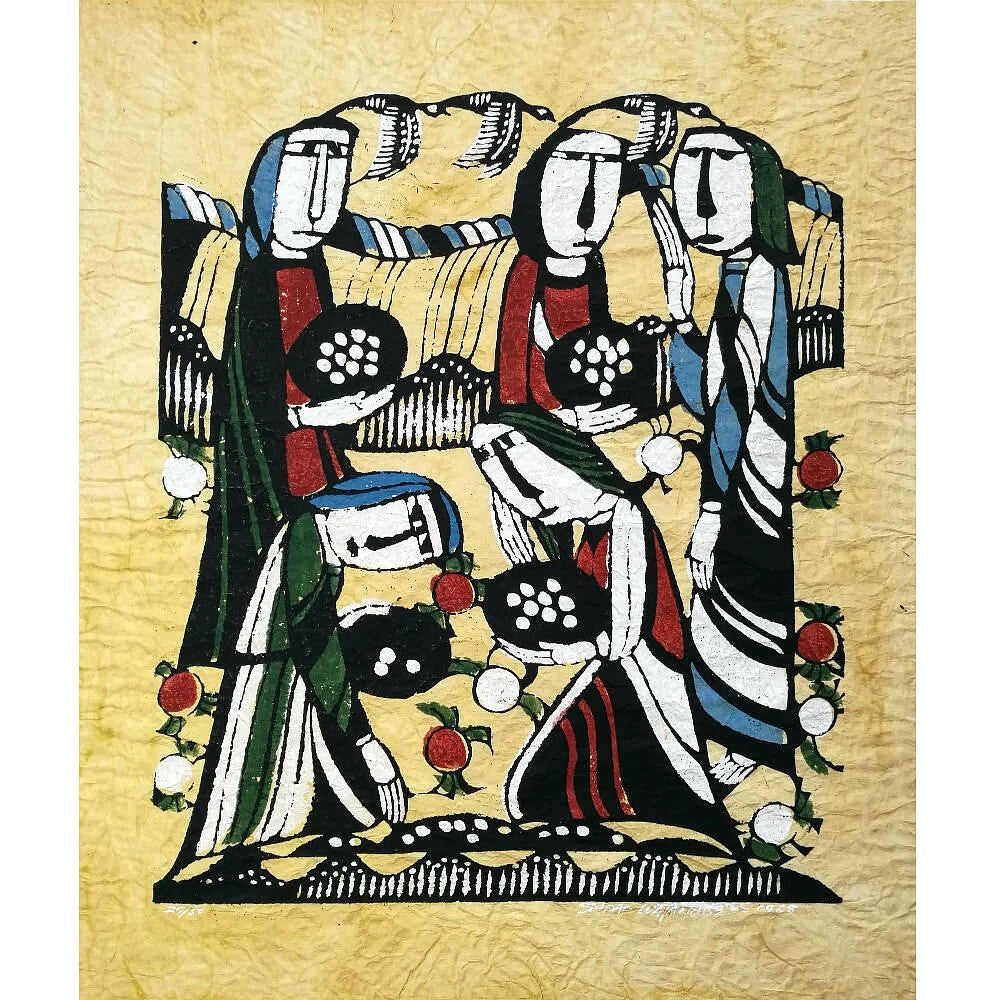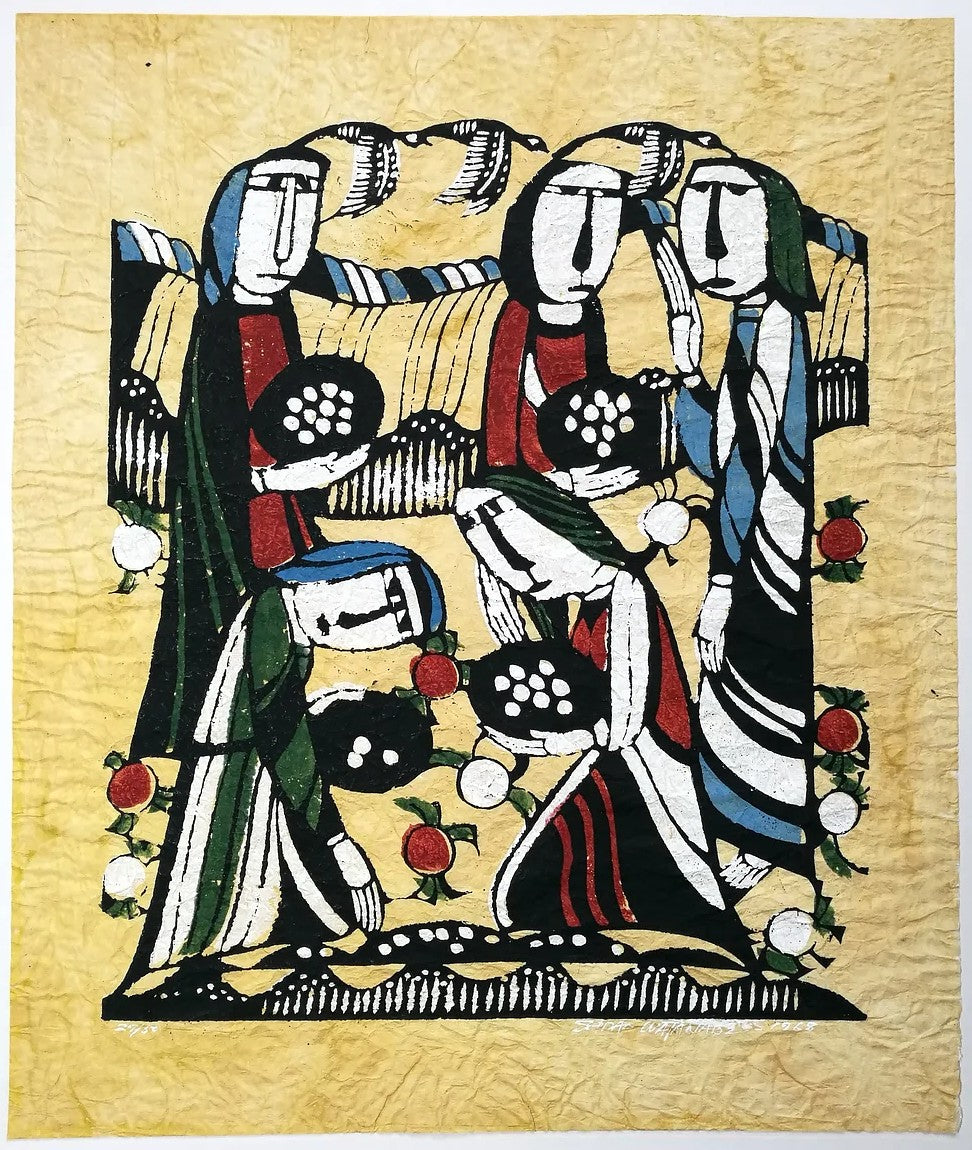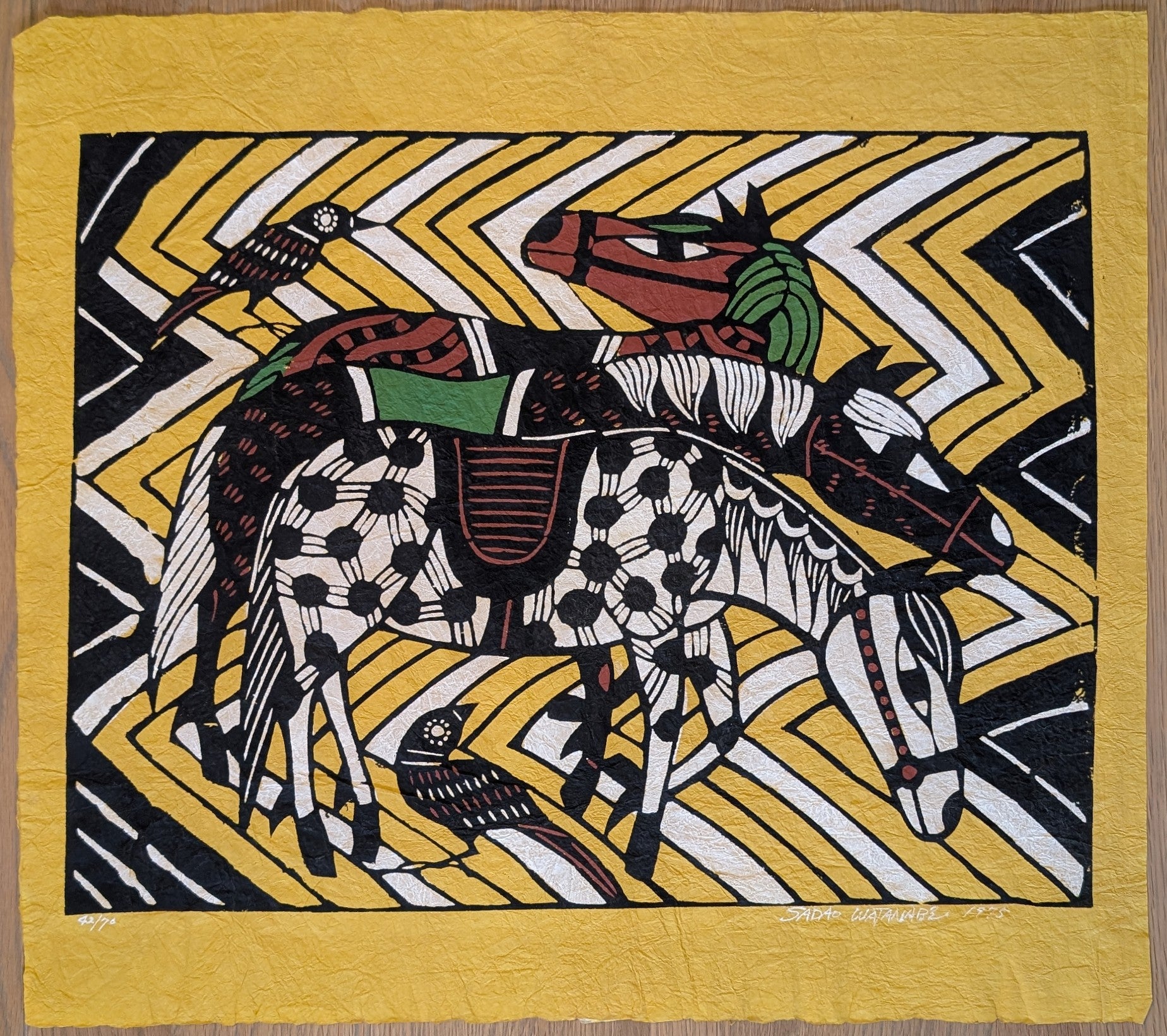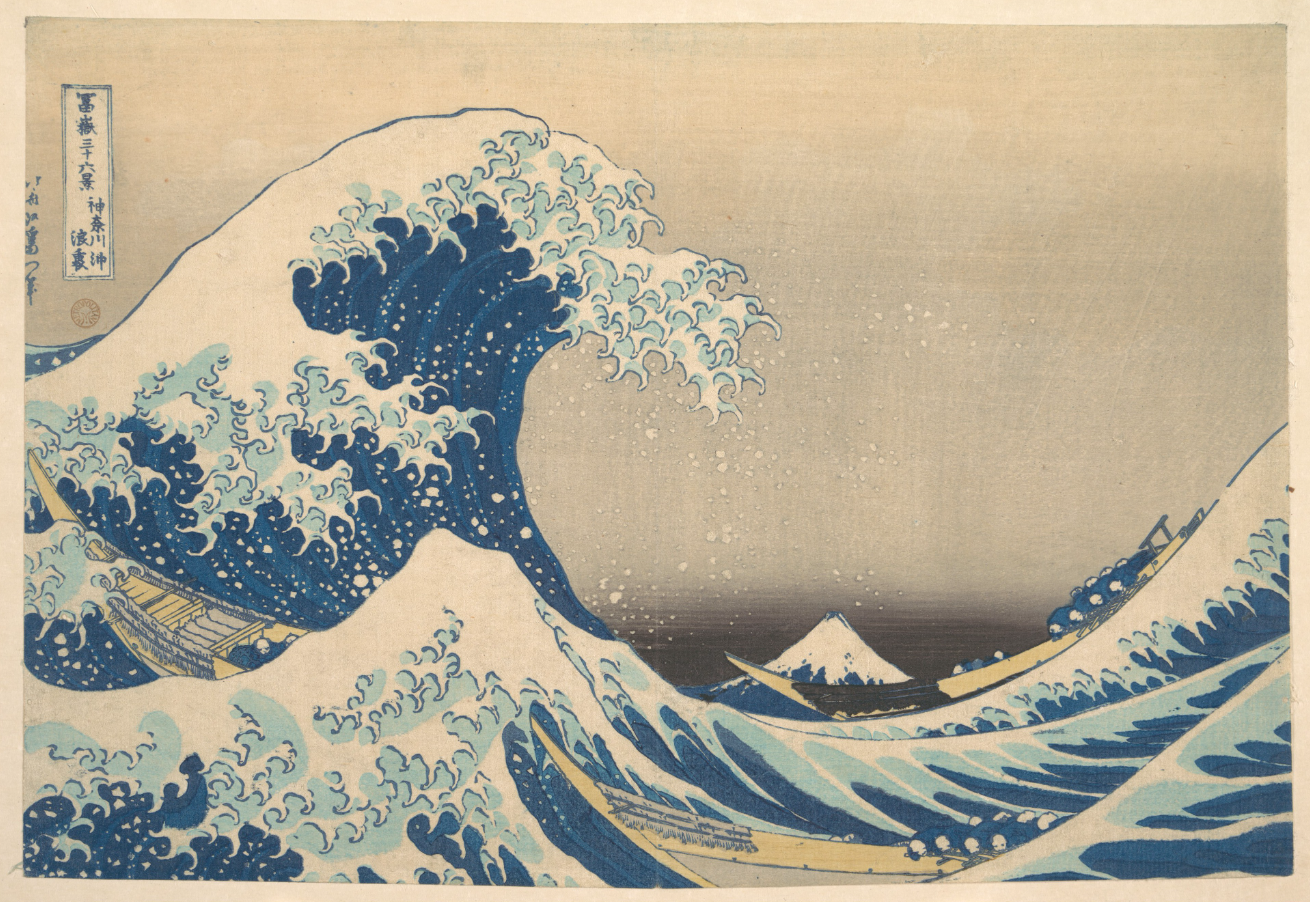渡辺禎雄 Sadao Watanabe (1913-1996)
Faith in Folk Tradition: The Biblical Prints of Sadao Watanabe
Sadao Watanabe was Japan’s foremost Christian artist of the 20th century, renowned for his vibrant 合羽摺 (kappa-zuri) stencil prints on hand-crumpled 揉紙 (momigami) papers. Born in Tokyo in 1913, he studied under katazome master 芹沢銈介 Keisuke Serizawa and absorbed the mingei ideals of 柳宗悦 Yanagi Sōetsu, grounding his art in folk craft traditions. Guided by his faith, Watanabe dedicated his career to capturing biblical stories in print, drawing on katazome (型染め) dye-resist techniques and their adaptation to kappazuri (合羽摺) stencil printing on paper, alongside traditional Japanese materials and folk artistry.
His prints are characterised by bold, elongated figures, and rich pigments of colour - a style that brought quiet charm with early successes such as アブラハムの物語 (The Story of Abraham), ルツ物語 (The Story of Ruth), and 青銅の蛇 (The Bronze Serpent). From the 1950s, he exhibited widely in Japan and abroad, gaining international recognition for his unique synthesis of spirituality and craft. Focusing almost exclusively on biblical narratives, Watanabe's work depicts a vast range of Old and New Testament scenes & stories, which today, remain distinctively beautiful artworks in modern Japanese printmaking.
Today, Watanabe’s prints are highly collectable and held in major collections worldwide, including the Museum of Modern Art in New York, the National Museum of Modern Art in Tokyo, the British Museum, and the Vatican Museum for Modern Religious Art. His art is even said to have hung in the White House, underscoring his rare global reach. The Sadao Hanga Catalogue, compiled by Jan J. Catsburg, remains the most comprehensive record of his output, while John Kohan’s Sacred Art Pilgrim Collection holds one of the largest private groupings of his works - ensuring that Watanabe’s legacy as a singular voice in modern Japanese printmaking continues to inspire collectors and scholars alike.




